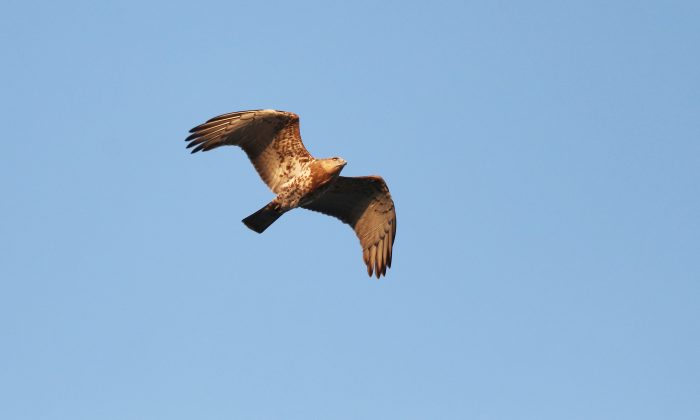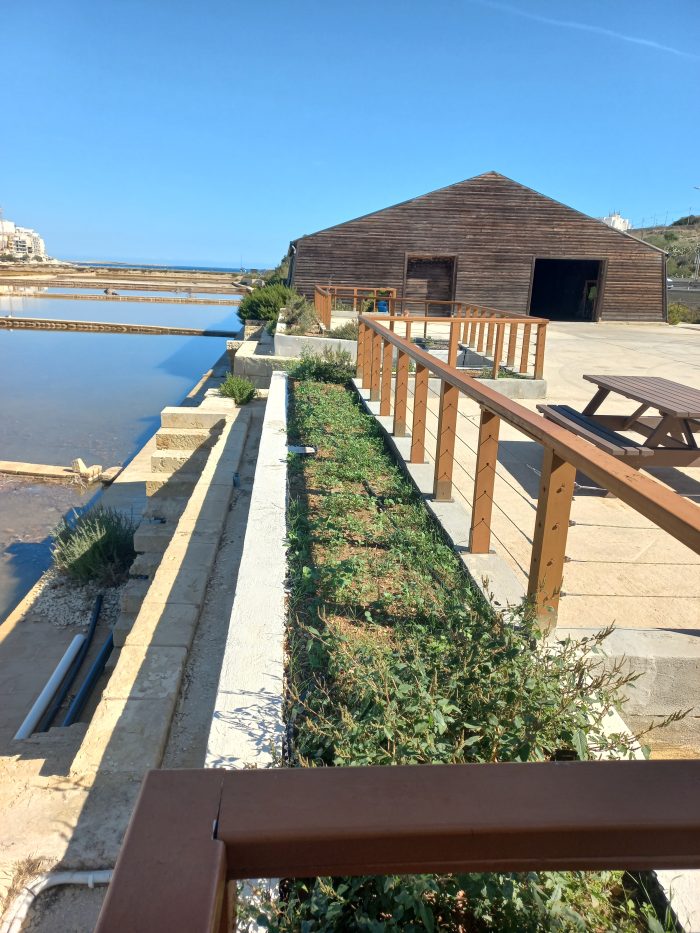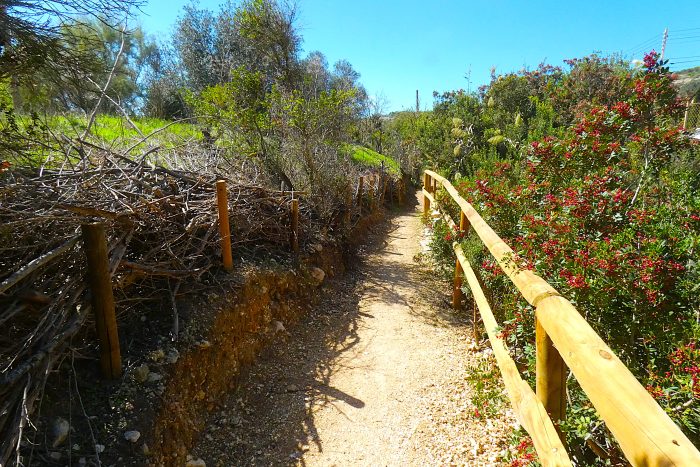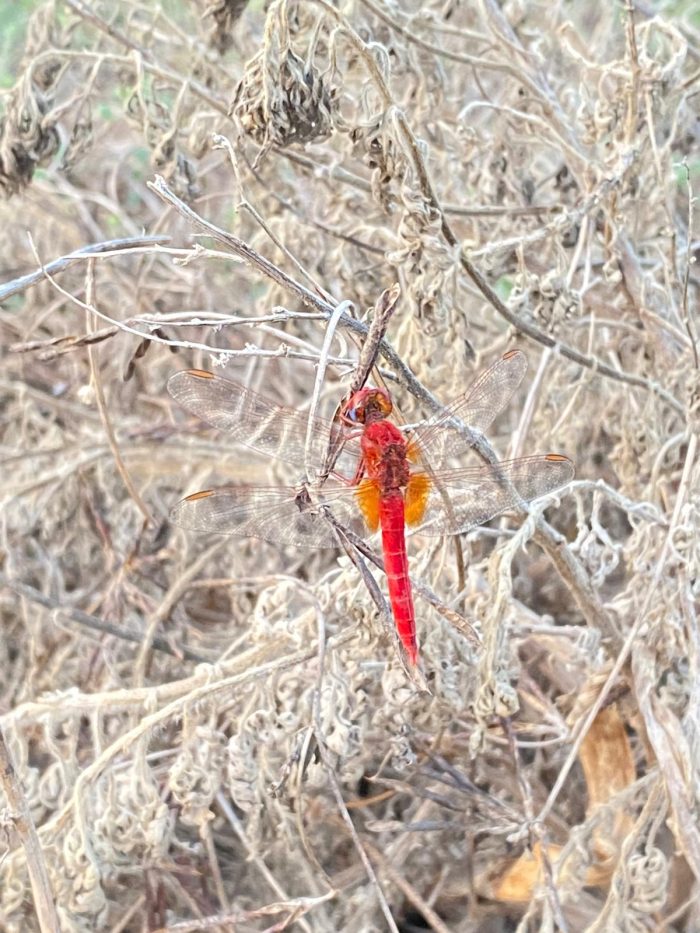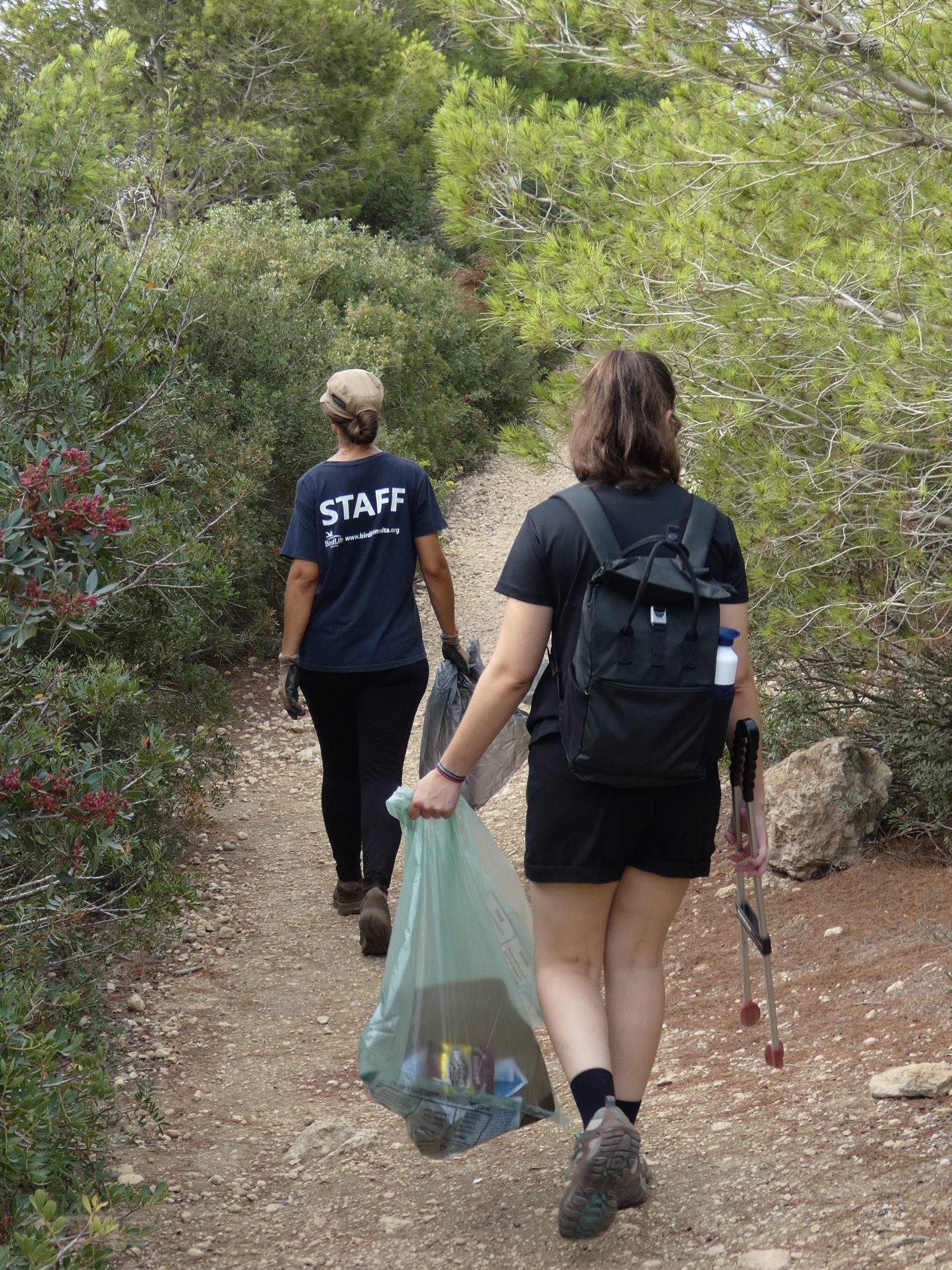On the frontlines is our monthly newsletter section covering the activities of BirdLife Malta’s conservation, policy and nature reserve (Salina, Simar, Għadira and Foresta 2000) teams, together with an update about rare and scarce bird species observed.

Short-toed Eagle Shot in Binġemma: Hunter Pleads Guilty
On September 24th, a small flock of Short-toed Eagles arrived in Malta, marking a rare visitation for this species. Unfortunately, this vulnerability makes them particularly susceptible to the threats of illegal hunting. In response, BirdLife volunteers diligently tracked the birds to ensure their safety.
Tragically, one BirdLife volunteer captured video evidence of a hunter shooting and killing one of the eagles in Binġemma. This incident was promptly reported to the Environmental Police Unit (EPU), resulting in the hunter’s arrest. A subsequent search of his property uncovered several protected species, both dead and alive.
The perpetrator, identified as Christopher Mercieca, faced a fine of €5,000 and had his hunting license permanently revoked. Due to his early guilty plea, a prison sentence was not imposed.
Incidents like this underscore the urgent need for more volunteers in the field and highlight the importance of monitoring a broader range of areas across the Maltese islands. This is one of the most effective ways to safeguard migratory birds on their journeys. If you are interested in volunteering with us and participating in our monitoring efforts, please email [email protected] for more information.
Hunter charged for using an illegal electronic caller
On the same day, BirdLife volunteers reported a hunter using an illegal electronic caller that was playing the calls of various duck species in Selmun. The police responded promptly, apprehending the individual on site with the electronic caller, resulting in an administrative fine of €250.
Bee-eater hunter reported
On September 28th, BirdLife volunteers reported another incident involving a hunter who shot and killed a protected Bee-eater in Lippija. The police apprehended the hunter at the scene, and the case will proceed to court in due course.
Black Stork sighting over Malta
Recently, our conservation team dedicated numerous hours to monitoring a juvenile Black Stork, initially sighted in Buskett by our trusted birdwatchers. This species is listed as Near Threatened by BirdLife International (2016) and is highly sought after for private collections.
Unfortunately, on the fourth day of monitoring, the stork was observed with evident injuries to both wings, indicating it had been shot. Subsequently, it was no longer seen in flight, leaving its fate uncertain.
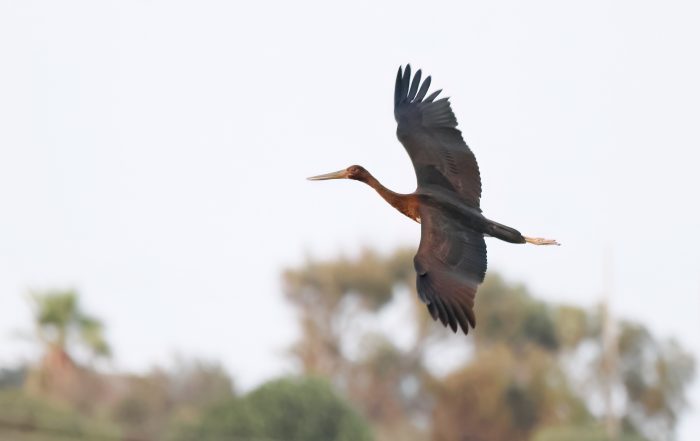
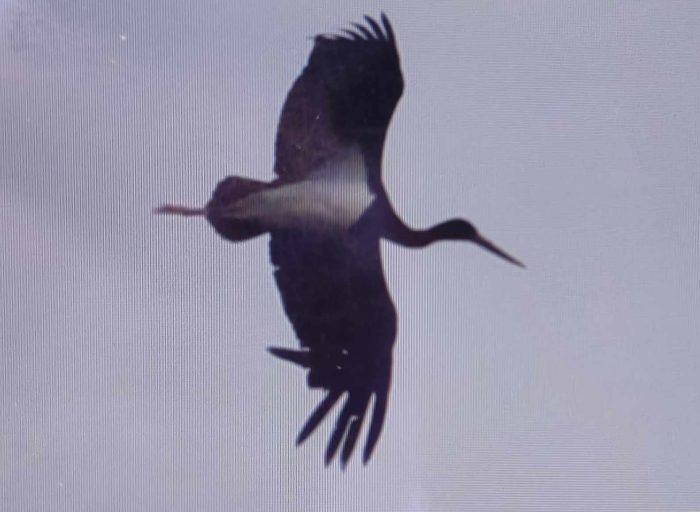

Salina Nature Reserve
Sightings
September in Salina brings with it the excitement of increased bird migration, offering a spectacular variety of species. Visitors were treated to a stunning array of charismatic birds, including sightings of Greater Flamingos, Spoonbills, Great White Egrets, and Caspian Terns.
The local regulars also put on a show, with Kingfishers frequently engaging in territorial disputes, waders skillfully navigating the shallow waters, flocks of herons soaring above, and the ever-present gulls in all their diversity. Notable among the rarer sightings were a striking male Bluethroat and a Black-necked Grebe, adding to the thrill of the season.
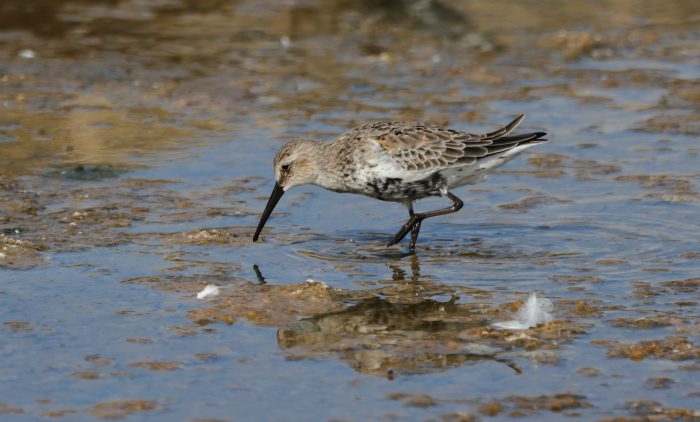

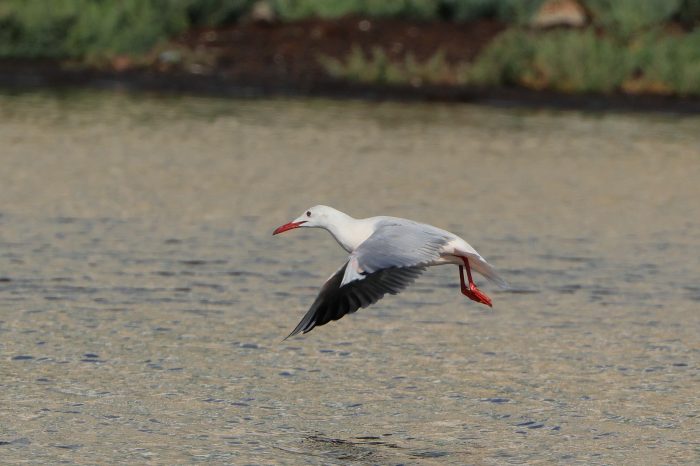
Works and visits
Infrastructure improvements are also underway. The installation of a fibre optic cable to provide Wi-Fi access to the Salt Museum is progressing, with completion expected in October. Additionally, a new border has been constructed to shield the bustling area in front of the Visitor Centre from the saltpans. Drip irrigation has been installed, and the space will soon be planted with tall plants and low shrubs, creating a natural screen and enhancing the area’s aesthetic and ecological value.
Għadira Nature Reserve
Sightings
Migration at Għadira has been in full swing, with frequent sightings of Bee-eaters, Ringed Plovers, Marsh-harriers, Tree Pipit, Yellow Wagtails, Wood Sandpiper, and Dunlin making appearances at the reserve. Common species such as Garden Warbler, Willow Warbler, Subalpine Warbler, and Sardinian Warbler were also observed, further enriching the birdwatching experience.
Despite a stretch of challenging weather with rain and wind for over two weeks, migration continued unabated. One particularly impressive day saw a variety of heron species, including Night Heron, Purple Heron, Little Egret, Cattle Egret, along with a notable 32 Grey Heron and Great White Egret. Soon after, a raptor passage delighted observers with sightings of Honey Buzzard, Marsh-harrier, and an Osprey from Norway, which took a brief fishing break at the reserve. Other notable species included the first Blackcap of the season, Temminck’s Stint, Little Bittern, Whinchat, Tawny Pipit, Ruff, Snipe, Common Teal, Shoveler, Ferruginous Duck, and two Black-necked Grebes.
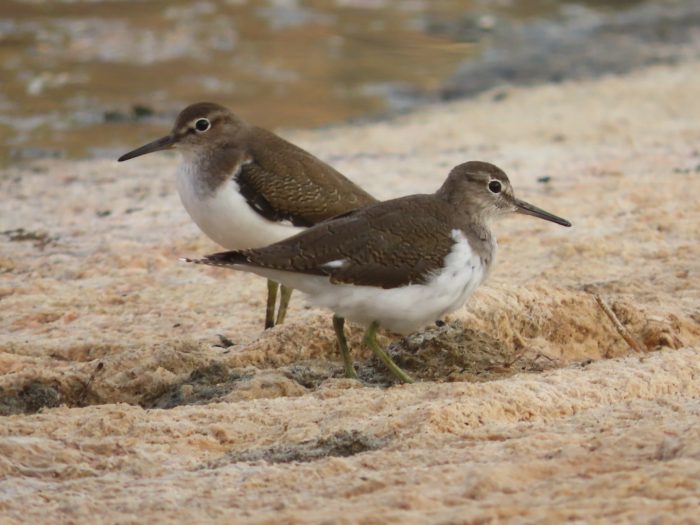
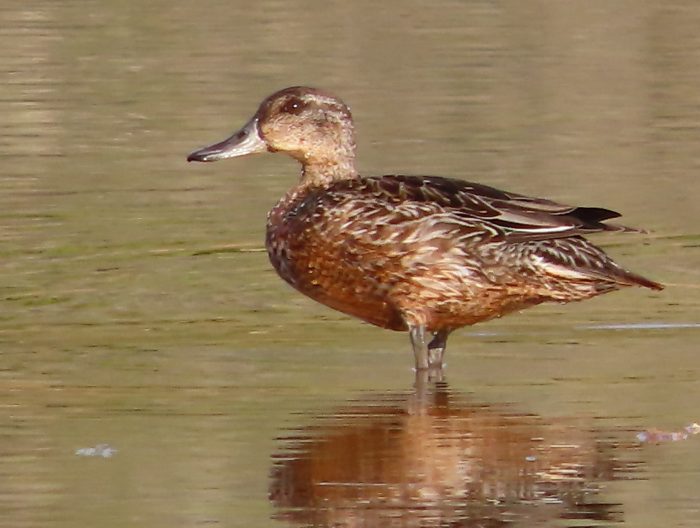
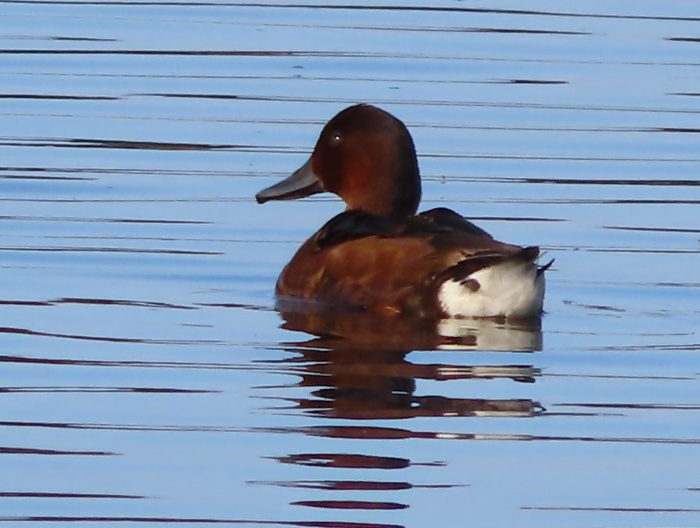
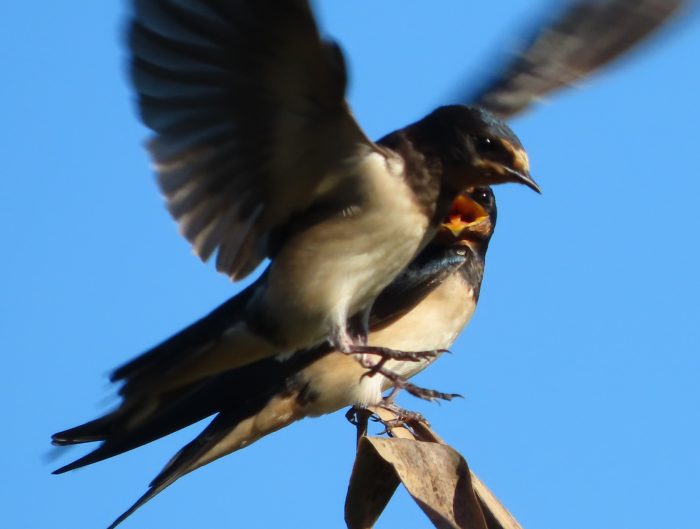
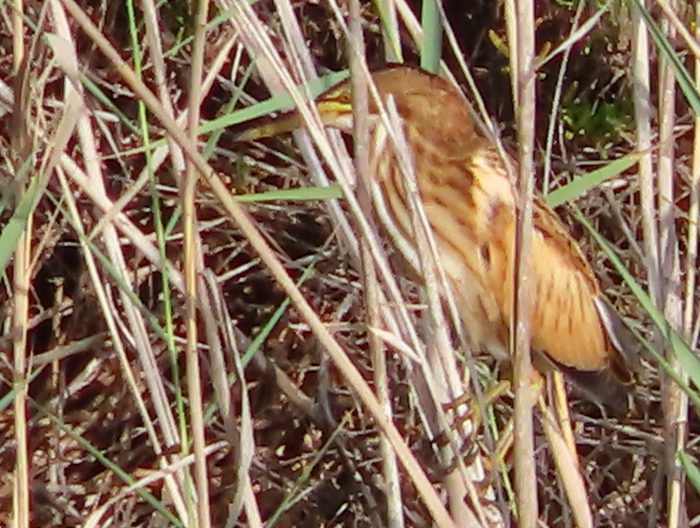
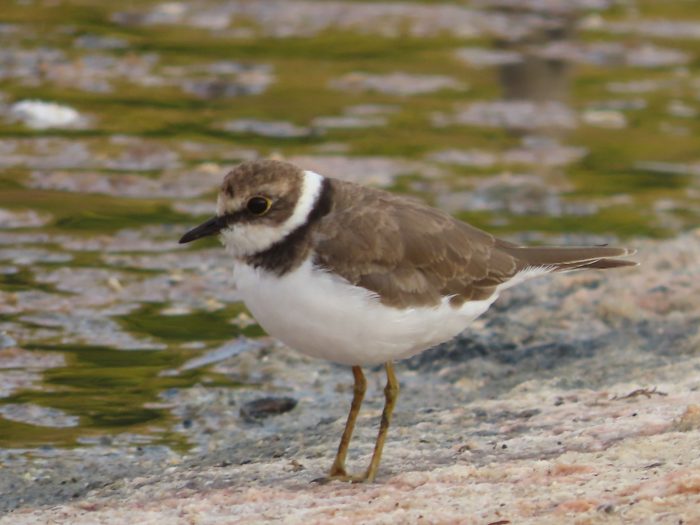
Works
Weekly bird-ringing efforts continued, with trans-Saharan migrants such as Willow Warblers, Common Redstart, Yellow Wagtails, Tree Pipits, Subalpine Warblers, Barn Swallows, Wryneck, and Kingfishers among those ringed.
Meanwhile, construction of the new hide progressed steadily. Building bricks and cement mix were transported using small machinery, and by the end of the month, the walls had been completed, marking a significant milestone for the project.
Control of invasive plant species in the sand dune areas also continued, targeting Giant Reed and Blue-leaved Acacia. The Sand-burrowing Cricket survey, conducted in collaboration with Prof. Louis Cassar from the Institute of Earth Sciences, was carried out weekly, with results indicating a noticeable decline in cricket numbers throughout the month.
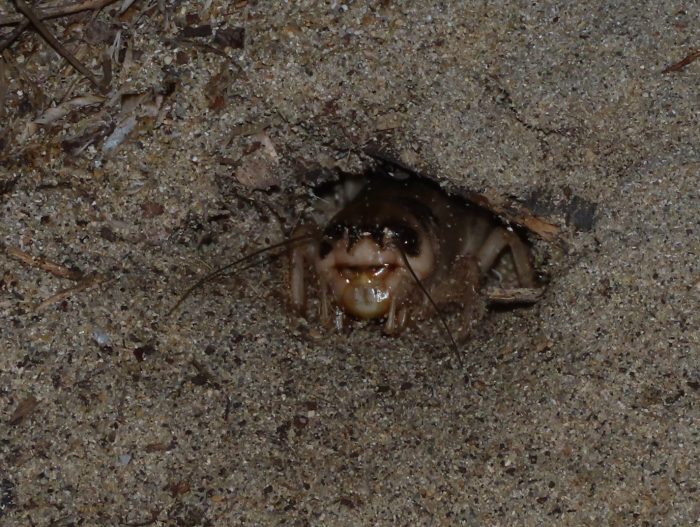

Simar Nature Reserve
Sightings
With the arrival of the first autumn rains, the nature reserve has undergone a remarkable transformation. The landscape turned greener, and rising water levels submerged parts of the exposed mudflats. The glasswort covering most of the islands within the wetland began to take on a reddish hue, adding a colorful contrast to the greenery. Meanwhile, the reedbeds continued to expand, with green reeds pushing further into the deeper waters. Gradually, the wetland is reverting to its natural state, characterized by open water, extensive reedbeds, and open shorelines. This evolving habitat will significantly boost the reserve’s biodiversity, particularly benefiting migratory and wintering birds.
Indeed, a noticeable increase in migratory species staying longer, as well as an unusually high number of wintering birds for this time of year, was observed. Among the highlights, a flock of eight Common Coots has already arrived to overwinter here—the highest number ever recorded in Malta during this period. Water Rails have also made their presence known, with their distinctive calls echoing from within the wetland. A good number of Common Kingfishers can be regularly seen, perched on exposed spots as they hunt for fish. The population of Moorhens has increased significantly, and a few Grey Herons have already spent several weeks in the reserve. Additionally, the first Common Snipes of the season have arrived, while Black-crowned Night-herons have been spotted at dawn, heading for their roost after a night of feeding in the wetland.
Various wader species have also been present, mostly feeding along the mudflats. Notably, Simar recorded up to 10 Little Ringed Plovers—an exceptional sighting for the reserve—along with several Common Sandpipers and a few Little Stints. A small flock of four Common Greenshanks spent a couple of days feeding in the reserve, while Green Sandpipers made occasional appearances. Wood Sandpipers were present throughout the month as well.
Other birds spotted in the wetland included several Reed Warblers, along with Sedge Warblers and Great Reed-warblers. In the surrounding areas of the reserve, Subalpine Warblers were unusually common, along with sightings of Garden Warblers and a few Willow Warblers.
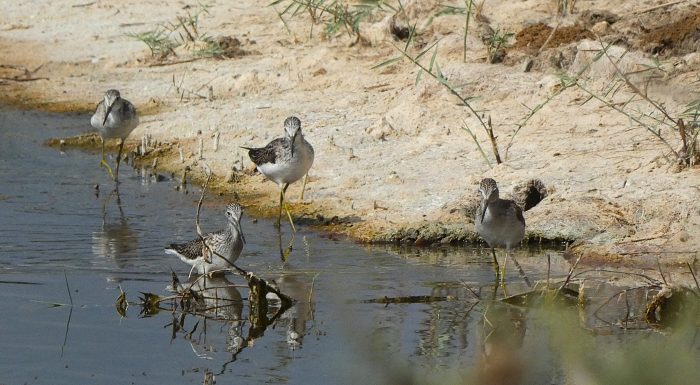
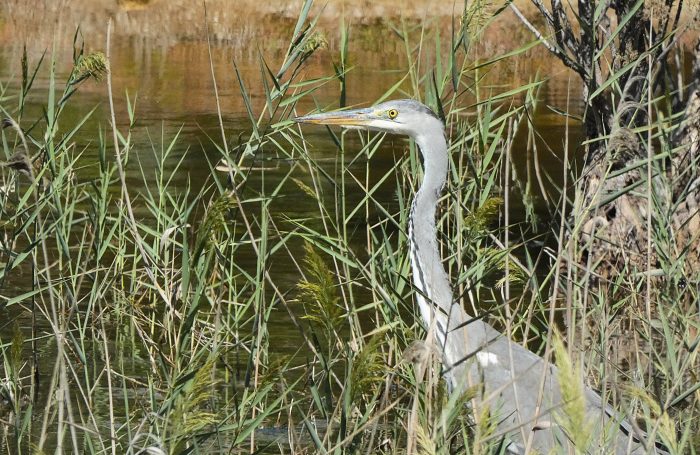
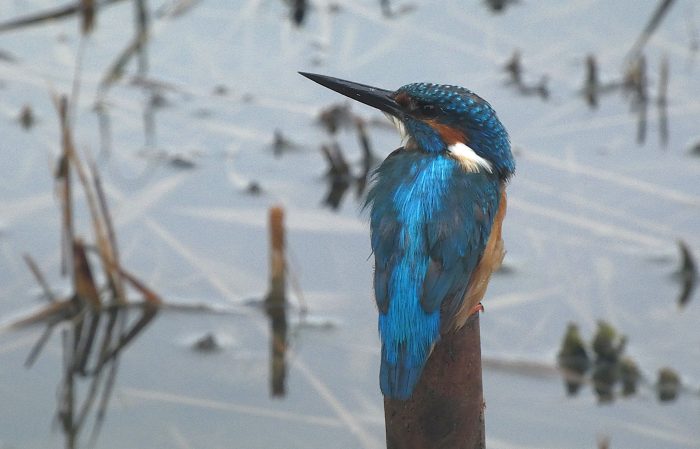
Works
Alongside habitat management and ongoing research, the most significant accomplishment this month was the completion of the new pathways in preparation for the reserve’s opening to visitors. The vegetation along the paths was trimmed, and the final touches were made to the paths themselves, including the installation of wooden railings, path levelling, and the use of wood to prevent erosion. These improvements will enhance the visitor experience while preserving the delicate environment of the reserve.
Foresta 2000
Sightings
As the summer heat of August faded into memory, September brought much-needed rains to Foresta 2000. Though the showers were slow to fill the rock pools, the reserve is gradually coming back to life, offering a refreshing change in both landscape and wildlife activity.
Early mornings now echo with the rare songs of Nightingales, while Barn Swallows and Swifts continue to animate the skies. The Blue Rock-Thrush, a frequent visitor, has been spotted regularly, and the peak of raptor migration has rewarded us with the majestic sight of Marsh-harriers soaring gracefully overhead. Among the warblers, we’ve welcomed the arrival of Subalpine Warblers alongside the season’s first Blackcaps. In the insect world, Scarlet Darters remain a vibrant presence, their vivid red wings a striking contrast against the landscapes of the reserve.
The rains have also brought new growth. Sea squill is beginning to sprout, and the reserve is dotted with clusters of lentisk berries—a vital food source for autumn migrants. In a particularly exciting development, a new Aleppo Pine has emerged beside the road, a small but significant indicator of regeneration and a promising sign of the Mediterranean forest’s ongoing establishment.
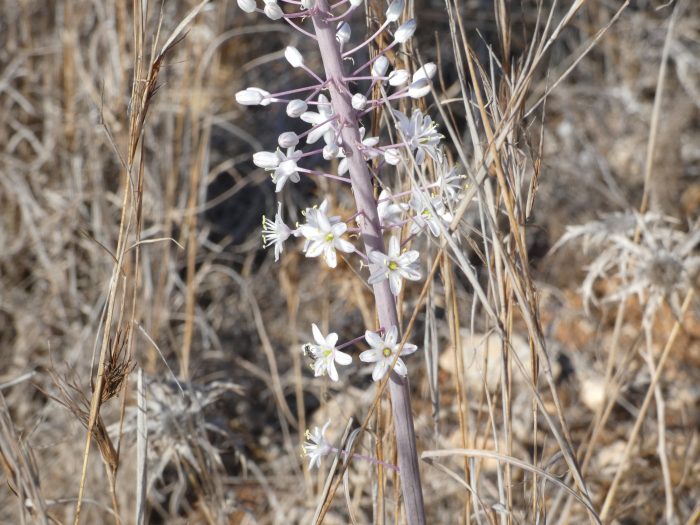
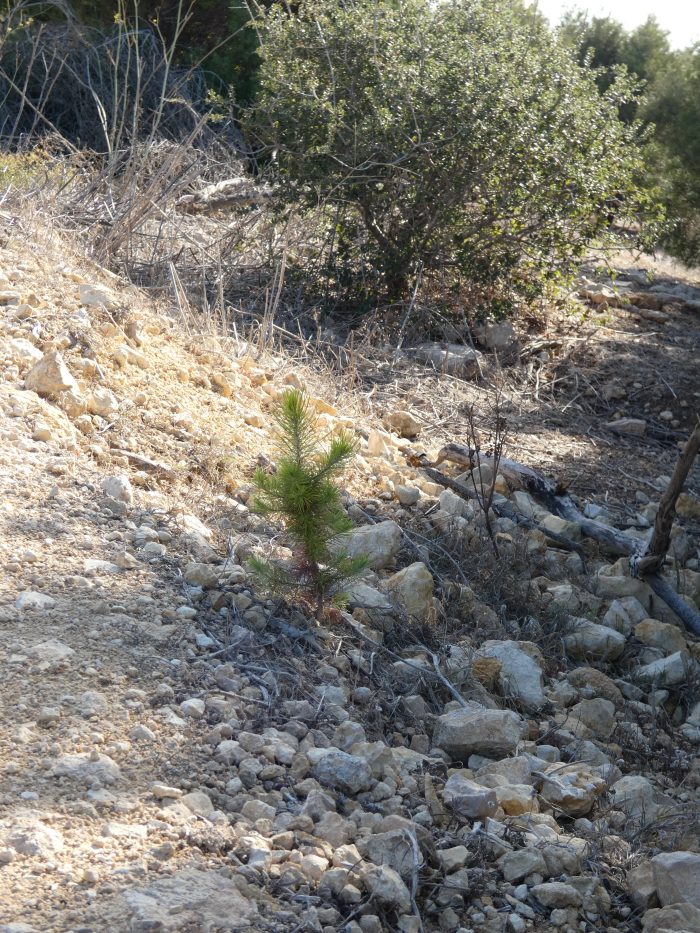
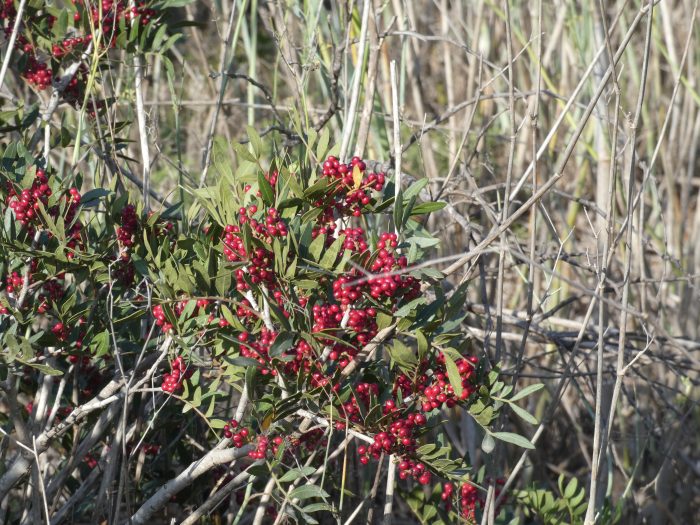
Works
Our regular clean-ups and area checks have kept the reserve in top condition, just in time to welcome the first school groups of the season. Foresta 2000 is ready for an exciting autumn of wildlife and exploration!

Oriental Honey-buzzard spotted over Malta
In September, BirdLife Malta’s birdwatchers at Buskett Raptor Watch Point were thrilled when an extraordinary sight unfolded. Among the usual migration of European Honey-buzzards, they spotted and identified a rare adult female Oriental Honey-buzzard (Kuċċarda tal-Lvant) soaring above. This remarkable bird offered clear, prolonged views, allowing all of its diagnostic features to be observed in detail. Our photographers eagerly captured stunning shots of this species—an incredibly rare treat for birdwatchers in Malta.
If confirmed by the Malta Rarities and Records Committee, this will mark the first-ever recorded sighting of the Oriental Honey-buzzard in the Maltese Islands—a significant milestone in local birding history.
The Oriental Honey-buzzard typically breeds from Western Siberia across to Northeastern China, Japan, and Korea, with most individuals wintering in Southeast Asia and the Indonesian Archipelago. While a few of these birds migrate through the Middle East during the autumn and spring, sightings in the Central Mediterranean are exceptionally rare. The last accepted record in this region occurred in May 2011 in Calabria, Italy.
This sighting is a rare privilege and a reminder of the unpredictability of bird migration, offering an exciting opportunity to witness a species seldom seen on these shores.
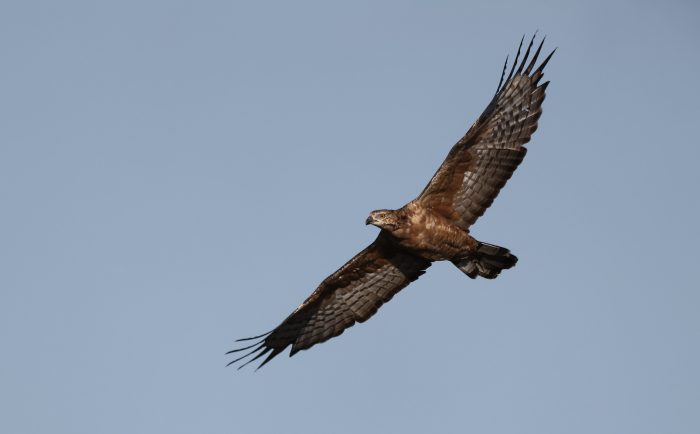

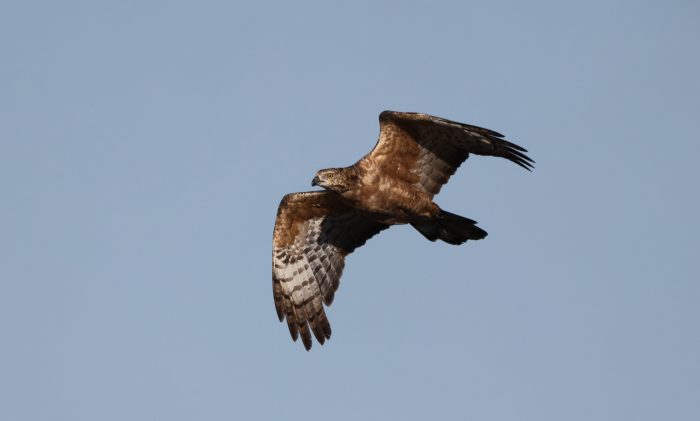
Credits
Words: Ben Chircop, Charles Coleiro, David Attard, Khouloud Belhadj, Manuel Mallia, Marcella Giornetti, Vera Tokmakova
Photographs: Aron Tanti, Charles Coleiro, David Attard, Mario V Gauci, Vera Tokmakova, Ray Galea, Sara Melfi
Editing: Khouloud Belhadj

